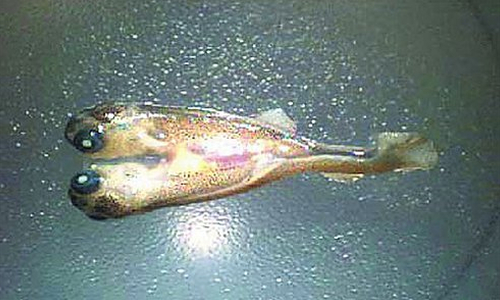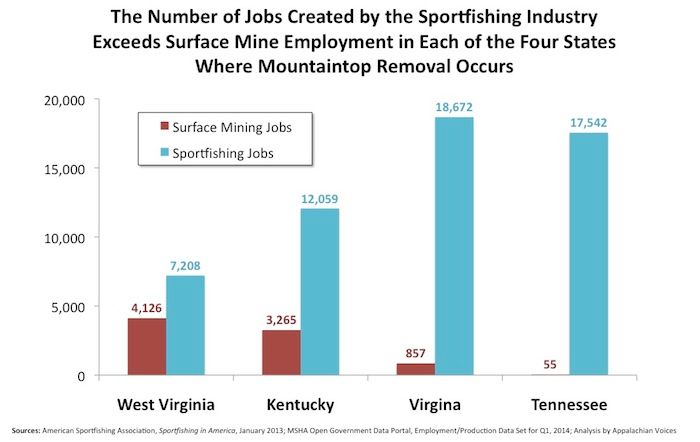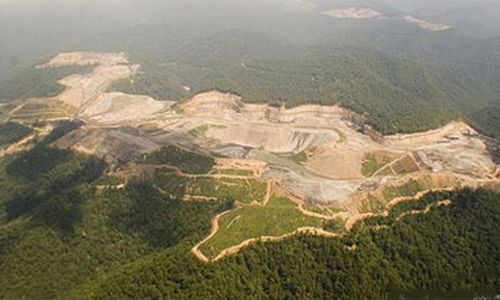
Mountaintop Removal Coal Mining Decimates Fish Populations in Appalachia

A study from researchers at the U.S. Geological Survey (USGS) published this month provides strong new evidence that mountaintop removal coal mining in Appalachia is devastating downstream fish populations.
That’s hardly news for long-time followers of the controversy surrounding mountaintop removal, a coal mining practice that involves blowing off the tops of mountains to access thin seams of coal and dumping the waste into valleys below. In 2010, a group of 13 prestigious biologists published a paper in Science, the nation’s premier scientific journal, that found:
“Our analyses of current peer-reviewed studies and of new water-quality data from WV streams revealed serious environmental impacts that mitigation practices cannot successfully address… Clearly, current attempts to regulate [mountaintop removal mining] practices are inadequate.”
The authors of the study published last week found a 50 percent decline in the number of fish species and a two-thirds decline in the total number of fish in streams below mountaintop removal mines in West Virginia’s Guyandotte River drainage. They made this important contribution to the science by using rigorous methodology to isolate several types of water pollution most likely to have caused these staggering declines.
But a more important contribution of the study may be that it draws the focus of water pollution impacts away from mayflies and other aquatic insects and onto a far more popular and charismatic organism that not only is important to rural people’s way of life, but supports a multi-billion dollar sportfishing industry in Appalachia.
Tellingly, industry spokespeople contacted by local reporters did not dispute the science as they typically have in the past. Those that didn’t dodge reporters entirely were quick to change the subject to the purported benefits of mountaintop removal to create more flat land for industrial and commercial development (in a region where less than 10 percent of the more than 1 million acres of mountains that have already been flattened has been used for economic development).
This muted response is in stark contrast to the coal industry’s response to previous science linking mountaintop removal to the loss of aquatic insects downstream from mine sites. The “EPA [U.S. Environmental Protection Agency] puts mayflies ahead of jobs” or “pests over people” became the rallying cries of coal industry supporters when the EPA first began bringing science back into the permitting process in 2009.
One suspects that the coal industry knows it isn’t likely to win a “jobs vs. fish” debate with America’s 33 million anglers.
Widespread damage to fish populations could also be important from the pocketbook perspective that political leaders in Kentucky and West Virginia take seriously. According to data from the American Sportfishing Association, recreational fishing creates a lot more jobs than mountaintop removal does in the states where it occurs:


 233k
233k  41k
41k  Subscribe
Subscribe 
